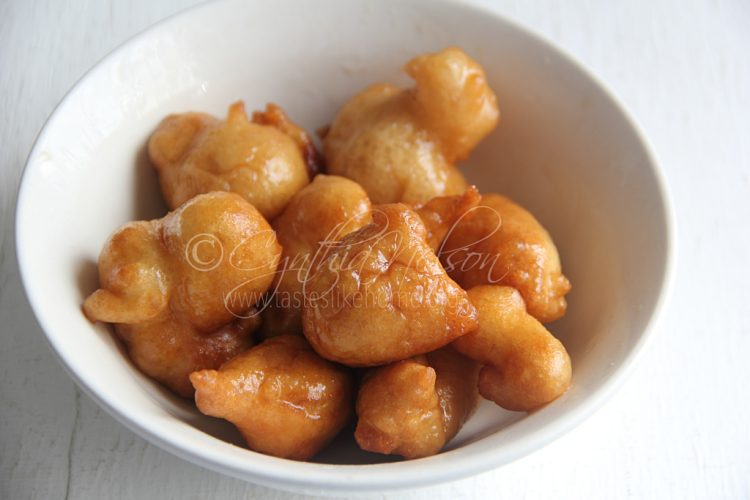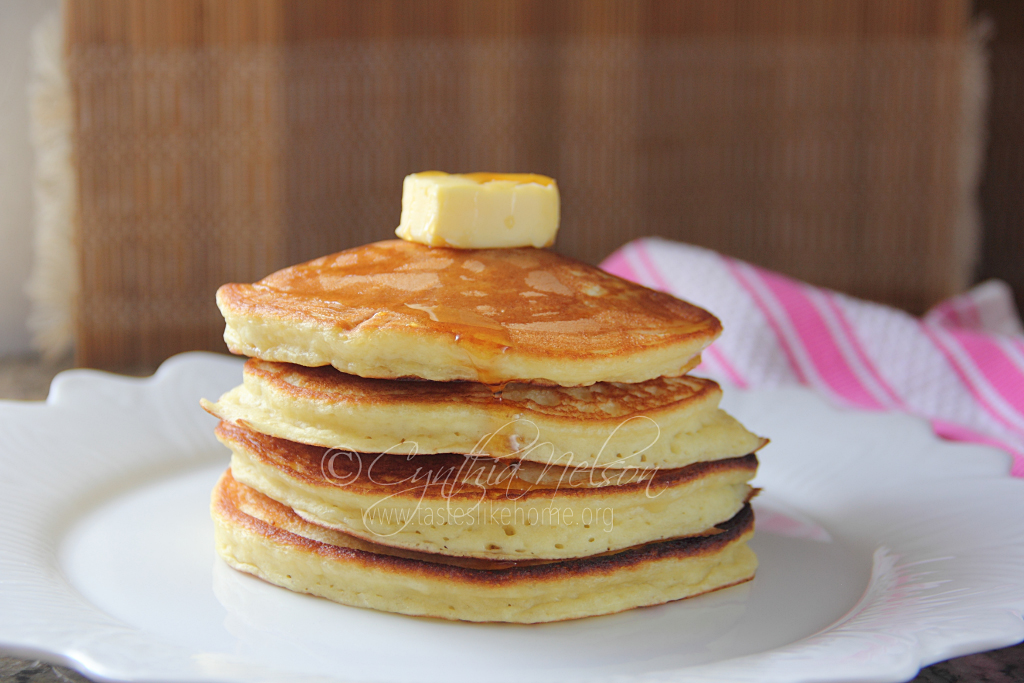Listen to this article:
Audio Player What type of pancakes are you making this year? Personally, I like the Portuguese-style pancakes, Malasadas – little yeasted fried doughnut balls drizzled with homemade syrup or rolled in cinnamon sugar. They are dangerous. I confess, I always overeat when it comes to this type of pancake. However, today I want to focus on the flat, soft, fluffy pancakes with which most people are familiar.
What type of pancakes are you making this year? Personally, I like the Portuguese-style pancakes, Malasadas – little yeasted fried doughnut balls drizzled with homemade syrup or rolled in cinnamon sugar. They are dangerous. I confess, I always overeat when it comes to this type of pancake. However, today I want to focus on the flat, soft, fluffy pancakes with which most people are familiar.
Pancakes are happy food. When you think of pancakes, you think of your childhood. You think of syrup, jam and jelly. Butter, eggs and bacon too. The addition of fruits like bananas and berries, as well as little nuggets of chocolate chips, regardless of the type, puts a smile on everyone’s face.
Pancakes comprise 3 ingredients:
Flour – all purpose
Leavening agent – baking powder and/or baking soda
Liquid – milk or buttermilk
The optional addition of eggs, melted butter, sugar and spices all help to elevate and enhance the flavour of pancakes.

Flour
All-purpose flour makes the best pancakes. It offers the desired lightness to the finished product. While you certainly can use other flours, such as whole wheat, for a healthier option, texture-wise, pancakes made with all-purpose flour will always win.
Leavening agent
If you are not making your pancake batter with buttermilk, you do not have to use baking soda. The use of baking soda with buttermilk is to create a chemical reaction to the acid in the buttermilk offering bonus fluffiness to the crumb and rise of the pancake. On the other hand, if you are using milk, then baking powder will do. Use a heaped teaspoon of baking powder for every cup of flour.
Liquid
The use of buttermilk adds a nice tangy flavour and as I said above, it helps with fluffiness. If you do not have buttermilk, it is easy to make. Bring whole milk (full fat) to room temperature and add fresh lime or lemon juice or white vinegar to the milk and let it sit until the milk thickens. The process can take anywhere from half an hour to an hour depending on your location and temperature. For every cup of milk, use 1 tablespoon of lime juice, lemon juice or white distilled vinegar. Stir the two ingredients to mix and set on the countertop or somewhere warm.
If you are using milk, use whole milk. You can use evaporated milk too but I would suggest diluting the evaporated milk before adding it to make the batter.
I highly recommend that the ingredients for pancakes be at room temperature. It is the same principle as when making cakes. The warmth contributes to the lightness of the pancakes.
Optional – Eggs
The addition of eggs and melted butter to pancakes is not necessary. However, if you add eggs, let them be at room temperature too. I’d say use 2 eggs for 3 cups of flour. The eggs can be cracked and whisked with the milk or buttermilk or you can whisk in the yolks and beat the egg white to soft peaks and fold into the batter for light airiness.
Batter
The mixing of the batter is what determines the lightness of the cooked pancake. Overmixing causes pancakes to be tough. The more you mix, gluten will form and tightly bind the ingredients. Therefore, you want to mix until just combined. Mix all your dry ingredients together, separately, then the wet ingredients and then combine.
I see a lot of shows on television where people make the pancakes as soon as they finish mixing the batter, do that if you like. However, I have always, and I repeat for emphasis, always, found that resting the batter makes a better pancake. They rise better and cook up well. I let the batter rest, covered, for 15 minutes. This resting allows the flour to hydrate and the leavening agents to activate.
Cooking
A non-stick skillet or a seasoned tawah works perfectly for pancakes. I like to use my Futura non-stick tawah to make mine. It’s large so I can cook 2 pancakes at a time on it; more if I am making mini pancakes.
Regardless of which type of pan you are using, let it heat up on medium heat and then add your fat of choice – oil or butter. I like to use a neutral oil, saving the butter to eat with the pancakes. I also like the even colouring that oil gives to the pancakes and the fact that you do not need to use a lot of it to cook the pancakes, especially on a non-stick surface.
The pan is ready when a drop of water sizzles and evaporates quickly.
I use a measuring cup for the batter so that I get even sized pancakes. My preferred measurement is ¼ cup, but at times, I would use ⅓ cup too.
One of the things I like about cooking pancakes is that it tells you when it is ready to be flipped – bubbles form on the surface and the edges look set.
Optional – Flavourings & add-ins
A pinch of spices such as cinnamon, cardamom and nutmeg can be added as well as essences/extracts like vanilla, mixed or almond to boost the flavour of your pancakes.
Some people like their pancakes with a hint of sweetness so they add a little sugar in the dry ingredients before turning it into a batter.
Fresh fruits like bananas and berries, chocolate chips and nuts can be added for extra flavour and texture. Actually, I just had an idea for an add-in. If it is successful, I’ll tell you about it next week.
Serving
Eat your pancake the way you like and want to: stacked or single layer. Butter and syrups are traditional. If you are having them for breakfast, then bacon, sausages, eggs and ham are all good accompaniments. What I like to do sometimes is grate cheese and have it on standby. As soon as a pancake is done cooking, I rub it with butter and sprinkle on cheese and then top it with another hot pancake. The cheese in between melts, sandwiching the pancakes. So good!
All this talk about pancakes has made me hungry. Whichever type of pancake you make, enjoy!
Cynthia
cynthia@tasteslikehome.org









